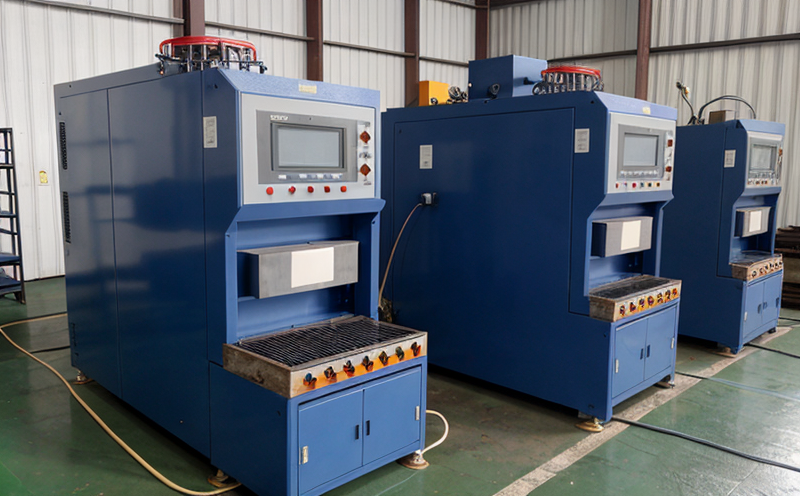EN 12390 Cement Raw Material Strength Testing
The European Standard EN 12390 provides a comprehensive framework for testing cement raw materials, focusing on the strength and quality of these materials before they are processed into cement. This standard is crucial in ensuring that the raw materials used meet the necessary specifications to produce high-quality cement products.
Cement raw material testing involves several key parameters such as chemical composition, physical properties, and mechanical strength. The EN 12390 standard outlines specific methods for determining these attributes, which are essential in maintaining consistent quality throughout the manufacturing process. Proper testing ensures that raw materials meet the required standards set by industry regulations and customer expectations.
The first step in this process is specimen preparation, where representative samples of the raw material are taken from various batches to ensure a fair assessment. These specimens must be prepared according to strict guidelines provided within the EN 12390 standard to avoid any bias or error in measurement.
| Step | Description |
|---|---|
| Sampling | Selecting a representative sample from the raw material batch. |
| Crushing | Crushing the sample to standard particle sizes for analysis. |
| Sieving | Sieving the crushed particles through appropriate mesh sizes. |
The next phase of testing involves determining the chemical composition and physical properties of the raw materials. This includes measuring key elements like calcium oxide, silicon dioxide, aluminum oxide, iron oxide, and magnesium oxide content, among others. Accurate measurement is critical as even slight deviations can impact the final product's performance.
| Element | Description |
|---|---|
| CaO (Calcium Oxide) | Main component of cement, contributes to setting and hardening. |
| SiO2 (Silicon Dioxide) | Affects the early strength development of the cement. |
| Al2O3 (Aluminum Oxide) | Influences the setting time and heat evolution during hydration. |
Once the chemical composition is determined, mechanical strength tests are conducted. These typically involve compressive strength testing using standard cylindrical specimens cured under controlled conditions according to EN 12390. The results from these tests provide valuable insights into how well the raw materials will perform during further processing.
The EN 12390 standard also includes provisions for evaluating other aspects of raw material quality, including particle size distribution and specific surface area measurement using BET (Brunauer–Emmett–Teller) methods. These additional parameters help in understanding the behavior of the raw materials during grinding and mixing processes.
Compliance with EN 12390 ensures that manufacturers are meeting stringent international quality standards, thereby enhancing their reputation and market competitiveness. By adhering to this standard, companies can ensure consistent output while also reducing risks associated with non-compliant products.
In summary, EN 12390 cement raw material strength testing plays a vital role in maintaining the integrity and performance of cement products. Through rigorous testing procedures, manufacturers can guarantee that their end products meet both regulatory requirements and customer expectations, ultimately leading to higher satisfaction levels among clients.
Understanding these tests is crucial for quality managers, compliance officers, R&D engineers, and procurement teams involved in the production cycle. By familiarizing themselves with EN 12390 and its associated protocols, they can make informed decisions that contribute positively to operational efficiency and profitability.
Benefits
The primary benefit of conducting EN 12390 cement raw material strength testing lies in the enhanced quality assurance it provides. By ensuring that all raw materials meet specified criteria, companies can avoid costly rejections and recalls down the line.
Another significant advantage is improved process control. With precise data from these tests, manufacturers can optimize their production processes, leading to more efficient operations and reduced waste. Additionally, compliance with international standards like EN 12390 helps build trust among consumers and regulatory bodies.
Clients who undergo this testing benefit greatly as well. They receive assurance that they are receiving high-quality raw materials which will result in superior cement products. This translates directly into better performance outcomes for their customers, fostering long-term relationships based on reliability and satisfaction.
Industry Applications
| Application Area | Description |
|---|---|
| Cement Manufacturing | Determining raw material suitability for different types of cement. |
| Construction Materials | Evaluating the strength and durability of concrete ingredients. |
| R&D | Developing new formulations for enhanced performance characteristics. |
The EN 12390 standard finds extensive application across various sectors, particularly in industries reliant on robust construction materials. Its use spans from large-scale cement manufacturers to smaller independent contractors engaged in projects requiring stringent quality control measures.
For research and development departments within these organizations, EN 12390 offers a standardized approach to testing that facilitates innovation by providing clear benchmarks against which new ideas can be evaluated. This ensures that any proposed changes or modifications are rigorously tested before implementation.
Competitive Advantage and Market Impact
Adhering to EN 12390 not only enhances internal processes but also provides a competitive edge in the global market. Companies that consistently meet or exceed these standards are better positioned to attract international clients seeking reliable suppliers.
In terms of market impact, compliance with this standard can lead to increased sales and customer loyalty. Consumers increasingly look for brands committed to sustainability and quality assurance; being able to demonstrate adherence to such internationally recognized norms reassures them about the reliability of your products.
Furthermore, staying compliant helps organizations navigate changing regulations more effectively. As environmental concerns grow, so do regulatory pressures on industries like construction and manufacturing. Being ahead of these changes can position a company favorably in terms of compliance costs and potential penalties.





